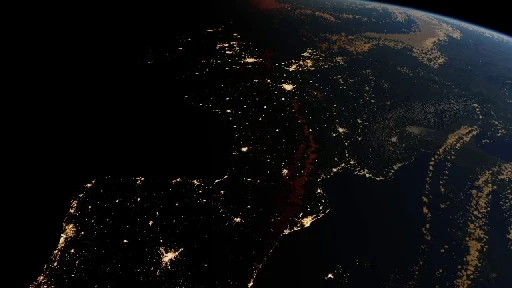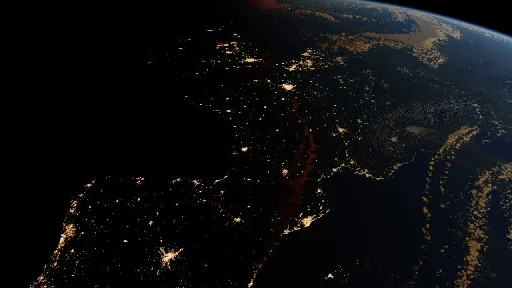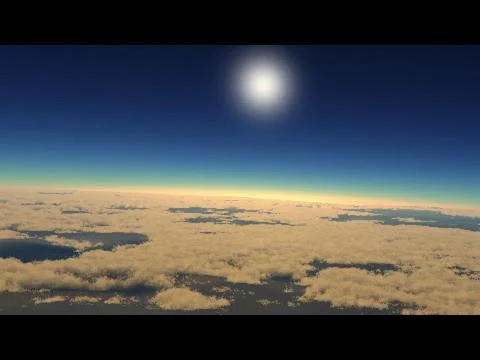Thanks. I am using Eric Bruneton's precomputed atmospheric scattering: https://inria.hal.science/inria-00288758/document
Linux is written in C. Many native extensions are written in C. If you are able to program in Clojure and use Java native interface and C to write performance critical code, you are covered on all ends.
Planet rendering with volumetric clouds and night time textures

YouTube Video
Click to view this content.
This video was rendered using daytime (NASA Bluemarble) and nighttime (NASA Blackmarble) textures. The volumetric clouds cast shadows during the day and can block city lights at night.
Source code: https://github.com/wedesoft/sfsim25/tree/302dab495016c7b029b5c59742d4478de8342dca
Music: Andrewkn - Surrealism Ambient Mix
Planet rendering with volumetric clouds and night time textures

YouTube Video
Click to view this content.
This video was rendered using daytime (NASA Bluemarble) and nighttime (NASA Blackmarble) textures. The volumetric clouds cast shadows during the day and can block city lights at night.
Source code: https://github.com/wedesoft/sfsim25/tree/302dab495016c7b029b5c59742d4478de8342dca
Music: Andrewkn - Surrealism Ambient Mix
C if you want to do low-level programming. Clojure if you want to do high-level programming.
Planetary cloud cover with volumetric clouds with shadows using deep opacity maps

YouTube Video
Click to view this content.
Prototype implementation using level of detail rendering of NASA blue marble data and NOAA elevation data. The planetary cloud cover is implemented using Perlin and Worley noise iteratively warped using curl noise. The shadows of the volumetric clouds are rendered using deep opacity maps. 1280x720 pixel video with 15 frames per second on AMD Radeon Vega 7 graphics (passmark 2034).
